
Championship Pedigree
Yamaha has a long track record with performance two-seaters. The GP (later GPR) series was a runaway favorite for years, sporting an aggressive handling personality and rocket-ship acceleration that thrilled both racer and wannabe alike. The death of the two-stroke ultimately sent that craft off into the sunset, but its spirit unquestionably lives on in the FZR.
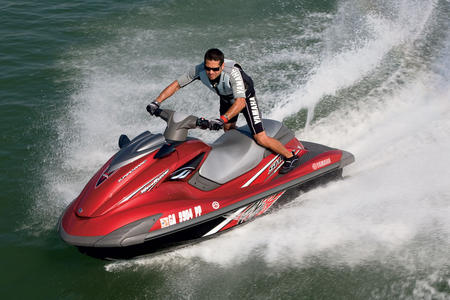 |
The FZR is almost identical in size to the FX line, but the FZ series (yes, it’s got a fraternal twin, the three-passenger FZS) is actually shorter in running surface, and features lifting strakes that run virtually the full length of the hull to improve top speed. It also features a GP-reminiscent dihedral keel shape, along with its own unique softly rounded chines. Moving away from a sharp chine edge allows this boat to roll more easily into the turns with an inside lean, giving the boat a quick, edgy personality.
A larger pump design than the FX funnels more water into the pump, enhancing acceleration. Providing that acceleration is the same 1.8-liter supercharged/intercooled engine found in the FX SHO, an 87-octane friendly combination that here pushes a craft weighing just over 800 pounds. In that way, the FZR is again like the GPs of old – it has a very favorable power-to-weight ratio. While the company no longer publishes horsepower numbers, it’s pegged at over 200 hp, but runs with machines rated much higher. Depending on conditions, I’ve reached anywhere from 66-68 mph on the top end, and rocketed to 30 mph in as little as 1.9 seconds.
Throttle response is delightfully crisp. The FZR uses Yamaha’s electronic throttle technology, meaning you’re no longer pulling a wire to send your intentions to the throttle body. Pin the lever and the craft leaps forward with authority. That hull shaves some of its weight through nanotechnology. Yamaha engineers introduced a new form of SMC a few years back, and it’s lighter, yet stronger, than the company’s former lay-up.
New Attitude
The craft’s personality differs depending on where you’ve set the aforementioned steering column. Most of the early hype seemed to center on the fully stretched out position, which locates the bars high enough that most riders can comfortably stand and absorb some rough-water shock with their legs. Bending over awkwardly is now a thing of the past. Pull the lever and extend the bars upward and you’re comfortable standing for long periods of time. Mission accomplished.
I think the boat’s real thrill, however, is in the opposite position. As much as the bars can extend beyond the norm, they can also lower below the average. In this setting, the driver feels ultra-aggressive and close to the water, railing through corners like the pilot of a souped-up street bike. Especially in calm water, the hull holds tenaciously, resulting in a high-speed carvefest for those who appreciate pure handling. It’s also a classic Yamaha design, in that it rides stable and predictable through the rough stuff.
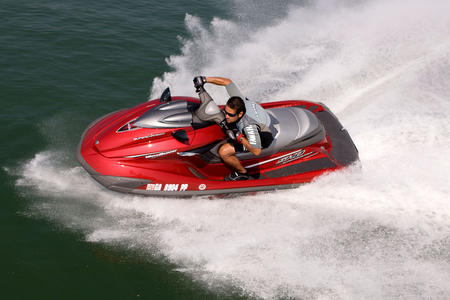 |
I only wish that the boat offered some form of electronic trim. Yamaha’s manual trim position has been around forever, and seems like a great idea as you don’t need to take your eyes off the water. Shifting on the fly, however, is not always realistic, as the force of water exiting the pump often fights your ability to force the nozzle downwards entering a turn.
Extra, Extra
Boats today need extras, and the FZR complies. A keyfob-style remote can be used to lock the craft for security. It also doubles as a speed-governing device for those times you want to turn the controls over to a newcomer or youngster, or save on fuel. There are also cup holders located in the glovebox, one element of the total 21.3-gallon storage capacity. The sloping back deck design doesn’t always make for easy reboarding (easy to get on, but often easy to slip back off as well) but it suits the craft. Reverse is tempered by the electronic throttle, meaning it won’t over-rev and lose traction.
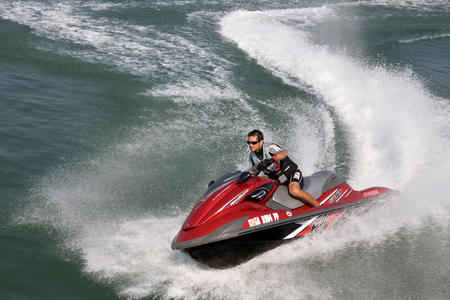 |
Thankfully, Yamaha resisted the temptation to juice up the dash display. Instead of high tech digital mania, you’ll find dual, red-trimmed analog gauges, just right in my opinion for this type of performance slant. Add in the red deck/black hull design, and you’ve got a craft that looks the part.
In that way, you can definitely judge this book by its cover.
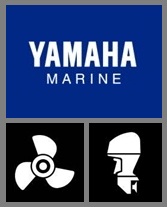
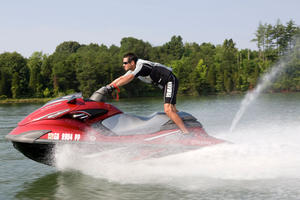
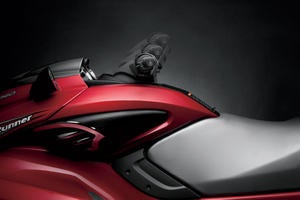
No comments:
Post a Comment